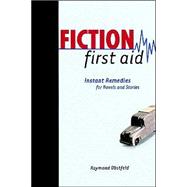| chapter one: Plot | 1 | (64) | |||
|
|||||
|
|||||
|
2 | (22) | |||
|
|||||
|
14 | (1) | |||
|
18 | (6) | |||
|
|||||
|
|||||
|
24 | (2) | |||
|
|||||
|
26 | (1) | |||
|
|||||
|
27 | (9) | |||
|
|||||
|
34 | (2) | |||
|
|||||
|
|||||
|
36 | (1) | |||
|
|||||
|
37 | (15) | |||
|
|||||
|
|||||
|
|||||
|
52 | (3) | |||
|
|||||
|
55 | (11) | |||
|
|||||
| chapter two: Characterization | 65 | (50) | |||
|
|||||
|
|||||
|
66 | (7) | |||
|
|||||
|
|||||
|
|||||
|
73 | (16) | |||
|
|||||
|
|||||
|
|||||
|
89 | (11) | |||
|
|||||
|
|||||
|
|||||
|
100 | (16) | |||
|
|||||
| chapter three: Setting | 115 | (24) | |||
|
|||||
|
|||||
|
116 | (13) | |||
|
|||||
|
|||||
|
|||||
|
|||||
|
|||||
|
129 | (3) | |||
|
|||||
|
|||||
|
|||||
|
132 | (8) | |||
|
|||||
| chapter four: Style | 139 | (32) | |||
|
|||||
|
|||||
|
140 | (3) | |||
|
|||||
|
143 | (3) | |||
|
|||||
|
|||||
|
|||||
|
146 | (12) | |||
|
|||||
|
|||||
|
|||||
|
158 | (16) | |||
|
|||||
| chapter five: Theme | 171 | (61) | |||
|
|||||
|
|||||
|
174 | (3) | |||
|
|||||
|
|||||
|
|||||
|
177 | (4) | |||
|
|||||
|
|||||
|
|||||
|
181 | (51) | |||
|
|||||
|
197 | (1) | |||
|
210 | (22) | |||
| chapter six: The Writer's Life | 232 | ||||
|
232 | (6) | |||
|
238 | (3) | |||
|
241 | (5) | |||
|
246 | (9) | |||
|
255 | (23) | |||
|
278 |








